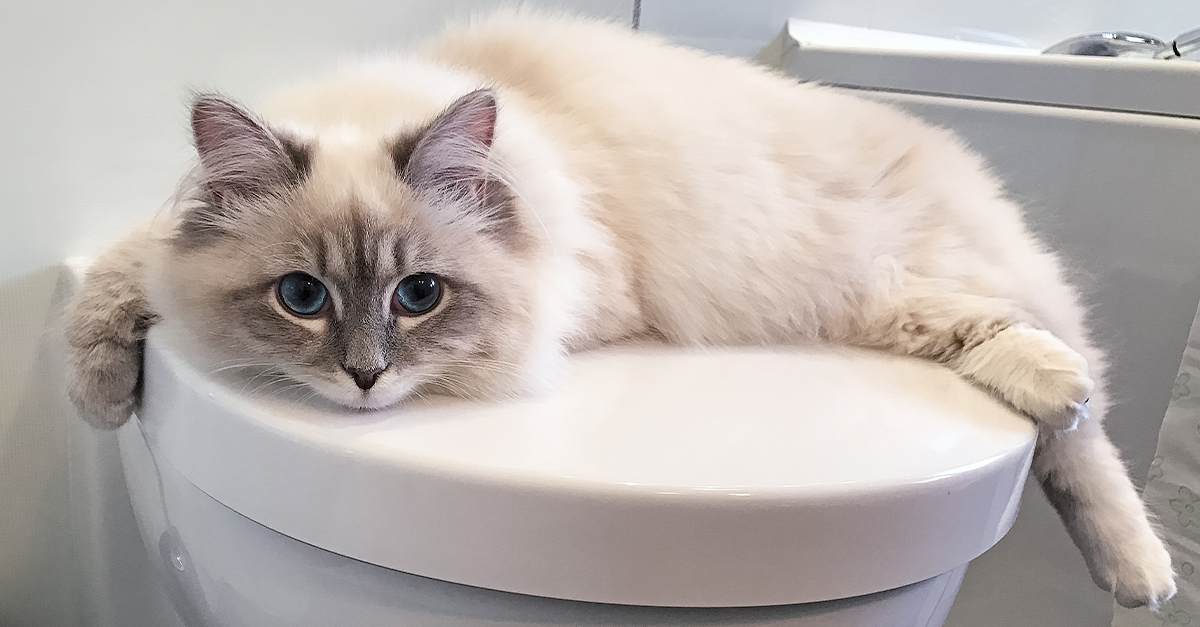Avoid Flush Cat Poop Down Your Toilet - Maintain Your House's Plumbing System
Avoid Flush Cat Poop Down Your Toilet - Maintain Your House's Plumbing System
Blog Article
We've encountered this post pertaining to Don’t flush cat feces down the toilet below on the web and think it made sense to write about it with you on my blog.

Intro
As cat proprietors, it's important to be mindful of how we throw away our feline friends' waste. While it might appear convenient to flush cat poop down the bathroom, this practice can have detrimental effects for both the atmosphere and human health.
Alternatives to Flushing
The good news is, there are much safer and a lot more responsible methods to take care of pet cat poop. Think about the complying with alternatives:
1. Scoop and Dispose in Trash
One of the most typical approach of disposing of pet cat poop is to scoop it into a naturally degradable bag and throw it in the trash. Make sure to make use of a dedicated clutter scoop and throw away the waste immediately.
2. Usage Biodegradable Litter
Select biodegradable pet cat trash made from products such as corn or wheat. These trashes are environmentally friendly and can be securely gotten rid of in the trash.
3. Bury in the Yard
If you have a lawn, think about burying cat waste in a marked location far from vegetable gardens and water resources. Make sure to dig deep sufficient to prevent contamination of groundwater.
4. Mount a Pet Waste Disposal System
Purchase a pet waste disposal system particularly made for pet cat waste. These systems use enzymes to break down the waste, reducing smell and ecological influence.
Health and wellness Risks
Along with environmental issues, purging feline waste can also present wellness risks to people. Pet cat feces may include Toxoplasma gondii, a parasite that can trigger toxoplasmosis-- a potentially severe disease, particularly for expecting women and individuals with damaged body immune systems.
Ecological Impact
Flushing cat poop introduces damaging microorganisms and bloodsuckers right into the water system, posturing a significant danger to marine ecosystems. These impurities can adversely impact marine life and concession water quality.
Conclusion
Accountable pet possession prolongs beyond giving food and shelter-- it also entails appropriate waste administration. By refraining from flushing cat poop down the commode and choosing alternate disposal approaches, we can reduce our ecological impact and shield human wellness.
Why Can’t I Flush Cat Poop?
It Spreads a Parasite
Cats are frequently infected with a parasite called toxoplasma gondii. The parasite causes an infection called toxoplasmosis. It is usually harmless to cats. The parasite only uses cat poop as a host for its eggs. Otherwise, the cat’s immune system usually keeps the infection at low enough levels to maintain its own health. But it does not stop the develop of eggs. These eggs are tiny and surprisingly tough. They may survive for a year before they begin to grow. But that’s the problem.
Our wastewater system is not designed to deal with toxoplasmosis eggs. Instead, most eggs will flush from your toilet into sewers and wastewater management plants. After the sewage is treated for many other harmful things in it, it is typically released into local rivers, lakes, or oceans. Here, the toxoplasmosis eggs can find new hosts, including starfish, crabs, otters, and many other wildlife. For many, this is a significant risk to their health. Toxoplasmosis can also end up infecting water sources that are important for agriculture, which means our deer, pigs, and sheep can get infected too.
Is There Risk to Humans?
There can be a risk to human life from flushing cat poop down the toilet. If you do so, the parasites from your cat’s poop can end up in shellfish, game animals, or livestock. If this meat is then served raw or undercooked, the people who eat it can get sick.
In fact, according to the CDC, 40 million people in the United States are infected with toxoplasma gondii. They get it from exposure to infected seafood, or from some kind of cat poop contamination, like drinking from a stream that is contaminated or touching anything that has come into contact with cat poop. That includes just cleaning a cat litter box.
Most people who get infected with these parasites will not develop any symptoms. However, for pregnant women or for those with compromised immune systems, the parasite can cause severe health problems.
How to Handle Cat Poop
The best way to handle cat poop is actually to clean the box more often. The eggs that the parasite sheds will not become active until one to five days after the cat poops. That means that if you clean daily, you’re much less likely to come into direct contact with infectious eggs.
That said, always dispose of cat poop in the garbage and not down the toilet. Wash your hands before and after you clean the litter box, and bring the bag of poop right outside to your garbage bins.
https://trenchlesssolutionsusa.com/why-cant-i-flush-cat-poop/

I have been very intrigued by Don’t flush cat feces down the toilet and I am hoping you appreciated my blog post. Sharing is good. Who knows, you may be helping someone out. I treasure reading our article about Can You Flush Cat Poo or Litter Down the Toilet?.
Call Today Report this page